
The Best of the Great British Steam Trains
[caption id="SmokinHeritage_Feature" align="aligncenter" width="1024"]
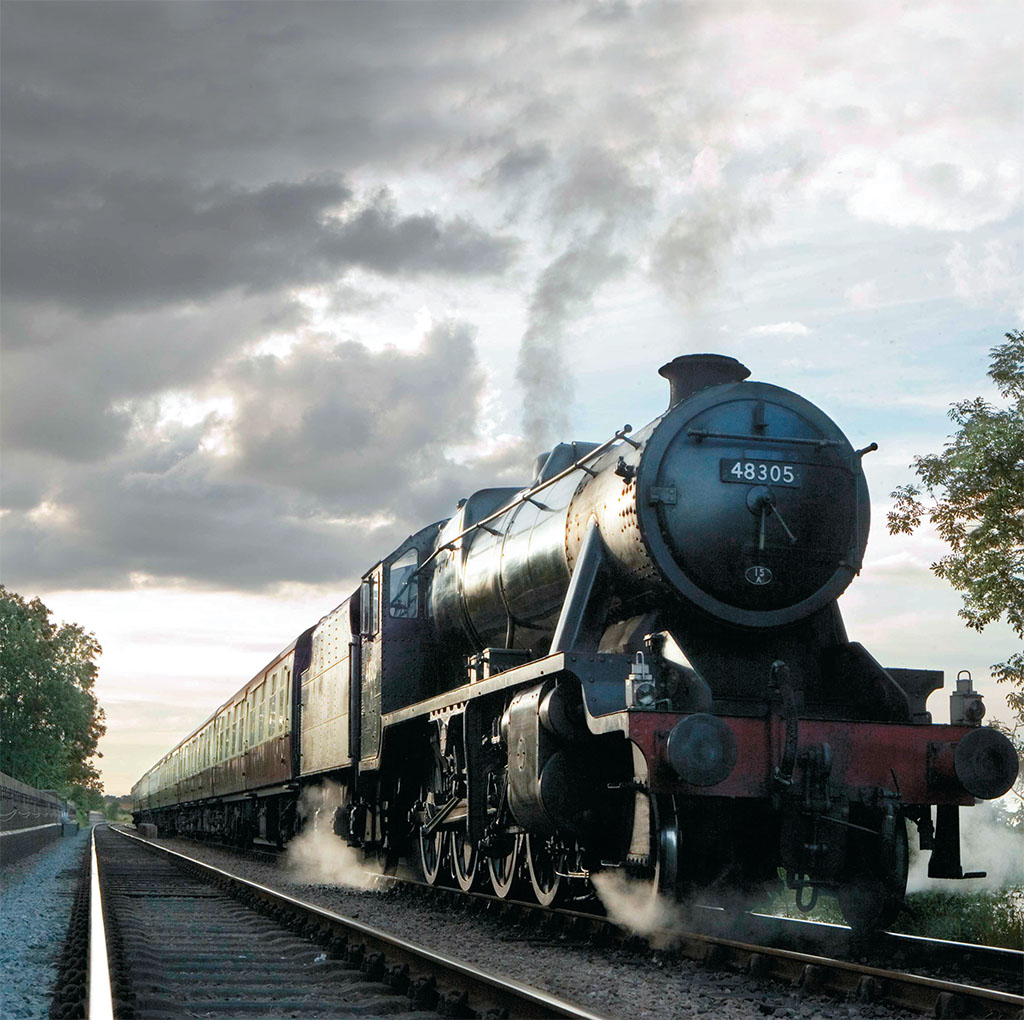
STEVEN TAYLOR
[caption id="SmokinHeritage_img1" align="aligncenter" width="859"]
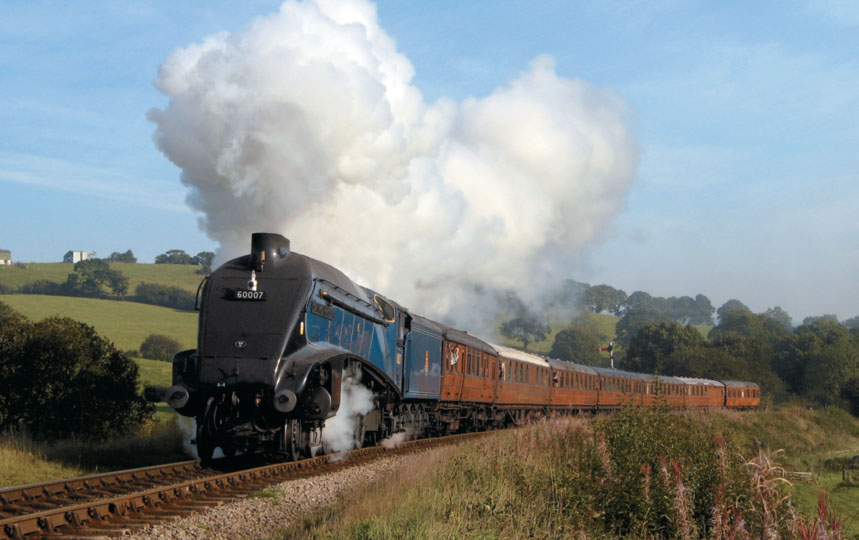
NORTH YORKSHIRE MOORS RAILWAY
[caption id="SmokinHeritage_img2" align="aligncenter" width="778"]
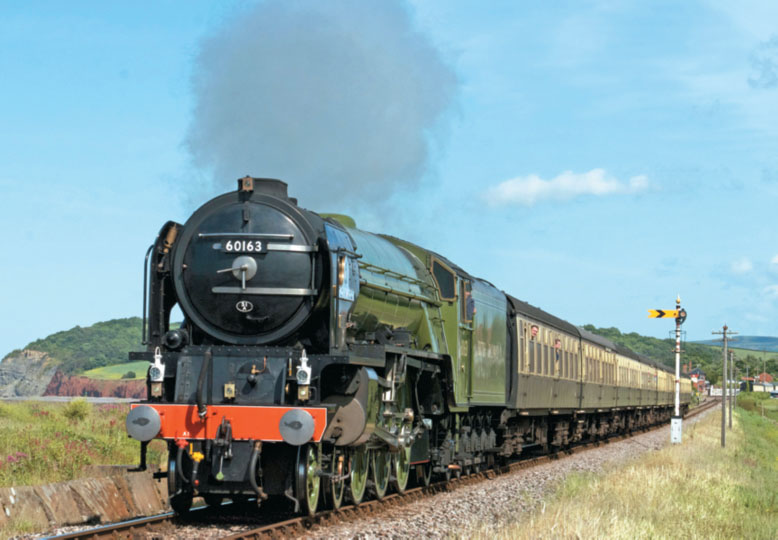
DAVID J. WILLIAMS
The semaphore signal clunks down. A long whistle comes from the locomotive. Steam gushes from the cylinders as wheels feel for grip. Smoke envelopes the footbridge as the first train of the morning slowly makes its way from the station.
This is very much the romanticized image of a steam train, whose species used to race through the British countryside. That they contributed heavily to the grime and pollution of industrial cities tends to be forgotten.
The year 1825 saw the world’s first steam-hauled passenger service on the Stockton & Darlington Railway. Over the next 50 or so years, thousands of miles of track were laid by competing companies across Britain in a mania akin to the Dotcom boom of the ’90s.
With around 120 competing railways, many of them loss making, the decision was made to rationalize the system down to four companies. Operating from 1923 these became known as the Big Four and consisted of the Great Western Railway (GWR), which had existed before but was now enlarged, and three newly created companies: the London Midland & Scottish Railway (LMS), London & North Eastern Railway (LNER) and the Southern Railway (SR).
These were nationalized in 1948 as British Railways (BR), partly due to the damage inflicted on the lines during World War II. With increasing competition from road haulage and more widespread car ownership, the railways never fully recovered. In 1950 the railway network covered about 21,000 miles. While closures had been accelerating throughout the 20th century, the publication of the Beeching Report in 1963 led to such pruning that by 1975 it left only 12,000 miles of rail.
By then steam had gone. Reduced oil costs and rising wages made diesel locomotives an increasingly attractive proposition in the 1950s. The last steam locomotive, Evening Star, was built for BR in 1960 and in 1968 all steam-hauled traffic finished.
The railway preservation movement kicked off with the narrow gauge Talyllyn Railway, in Wales, that became the world’s first heritage railway in 1951. Then in 1960, with the specter of the end of steam looming, the Bluebell Railway became the world’s first steam-operated preserved standard gauge line. A steady stream of closing branch lines and withdrawn locomotives, together with the lament for the end of a more romantic era, meant it was soon not alone.
Today there are around 150 heritage railways across Britain. They range from railway centers such as the Great Western Society at Didcot to lines like the West Somerset Railway operating around 20 miles of track.
Many of the projects have ambitious objectives, but offer the visitor little more than a ride in a brake van hauled by an industrial locomotive along a quarter of mile of track. The following lines offer some of the best scenery and re-creations of the old days of steam.
West Somerset Railway
At one time the only reason it might have made the list is that at 23 miles it is the longest heritage line. In the early days of preservation, ill-suited industrial locomotives struggled up the climb from Minehead to Bishops Lydeard. These days a fleet of large main line steam and diesel locomotives ply the former Great Western branch line. It boasts well-preserved GWR stations but also tries to keep alive the memory of the much loved Somerset & Dorset Railway both with locomotives and a museum at Washford station.
[caption id="SmokinHeritage_img3" align="aligncenter" width="1024"]
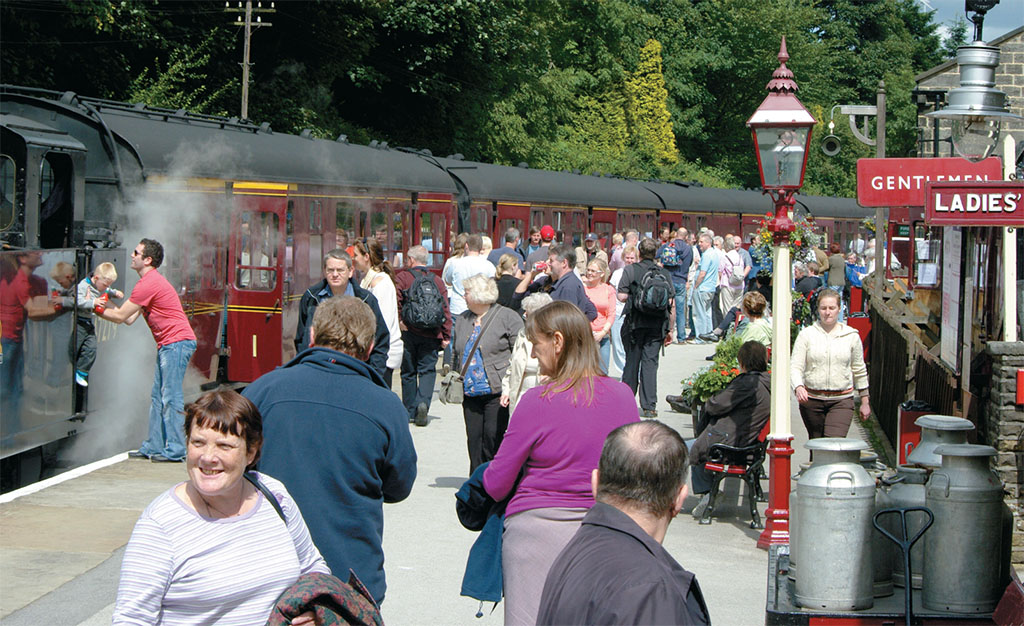
KIERAN PILSWORTH
Minehead is famous for the Butlins Holiday Camp, and trains from here run between the coast and the edge of the Exmoor National Park before the line veers into the picturesque Quantock Hills. On the way it steams through Dunster, an ancient village dominated by a castle on a hill, and Watchet, an ancient seaport. Many stations offer hiking opportunities.
Location: 10 stations in West Somerset.
Web site: www.west-somerset-railway.co.uk
Operation: Almost daily trains between April and October and most weekends the remainder of the year. Santa specials in December.
Fares: Day rover tickets £14.80 adults, £7.40 children, and £42 family
Bluebell Railway
This was the first standard gauge line to be preserved and predated the Beeching-recommended cuts. Currently it runs through nine miles of the beautiful Sussex countryside between Sheffield Park and Kingscote. A two-mile extension to East Grinstead should open within the next few years.
The Bluebell boasts of being the only all-steam line and has the biggest collection of steam locomotives of any preserved railway. Some of these are well over 100 years old and still operational. Also, unlike most other lines, many of the carriages they use date from prenationalization.
Each station on the former Southern Railway (SR) branch line has been delightfully restored to represent a different period of history. Sheffield Park encompasses the Victorian look of the London Brighton &amo; South Coast Railway; Horsted Keynes represents the SR; and Kingscote is indicative of 1950s BR.
Location: Three main stations in Sussex
Web site: www.bluebell-railway.co.uk
Operation: Daily from April to October, plus during holiday periods, otherwise weekends.
Fares: All line tickets, £12.50 adults, £6.25 children, and £35 family
Severn Valley Railway
As its name suggests, the line hugs the river for much of the 16 miles from Bridgnorth to Kidderminster. On its way it passes through beautiful country stations on the old GWR branch line. Many of the towns passed through are well worth visiting. Bridgnorth is divided into an upper and lower level, while Bewdley is a pretty market town.
The line boasts a large collection of steam locomotives and, unusually, can field rakes of original LMS, LNER and GWR coaches. There is a newly built museum, The Engine House, at Highley station, which houses the reserve collection and a restaurant.
Location: Six main stations in Shropshire and Worcestershire Web site: www.svr.co.uk
Operation: Daily from May to September. At other times: weekends and holiday periods.
Fares: Unlimited travel: £15.50 adult, £8 child, and £42 family; includes entrance to The Engine House.
North Yorkshire Moors Railway
The line claims to be the busiest with 350,000 passengers in 2009. This is partly thanks to the Harry Potter films. Goathland station doubled as Hogsmeade in the films and is also used, along with the village, as Aidensfield in the long running TV drama Heartbeat, which is set in the 1960s.
Today the line operates 18 miles between Pickering and Grosmont with some services continuing along National Rail tracks to Whitby. There are also occasional services between Whitby and Battersby.
Most of the former LNER branch line goes through the North York Moors National Park, and Newton Dale Halt and Levisham Station both offer great hiking opportunities.
There is a popular annual Railway at War event re-creating what the railway was like during WWII, involving military parades, along with period vehicles.
Location: Four main stations in North Yorkshire
Web site: www.nymr.co.uk
Operation: Daily from April to October; then largely weekends and specials. No services through most of January until mid February.
Fares: Day rover Pickering to Grosmont, £16 adult, £8 child, and £33 family
Great Central Railway
This is the only heritage line that can re-create the mainline days of steam. It preserves a former LNER trunk route and has a stretch of working double track allowing trains to pass each other at speed. Unlike other heritage lines, the speed limit is 45 mph instead of the more usual 25 mph.
When originally built, the aim of the line was to connect Manchester and Sheffield with Europe; but the line closed more than 25 years before the tunnel opened.
Today it has a large fleet of mainline steam and diesel locomotives currently operating over 8 miles between Loughborough and Leicester North. There are ambitious plans to lengthen the line to 18 miles by joining with another section of preserved track.
Location: Four stations in Leicestershire
Web site: www.gcrailway.co.uk
Operation: Most weekends, and around holiday periods, plus Tues-Thur. during summer months.
Fares: Day rover, £14 adult, £9 children, and £32 family
Keighley & Worth Valley Railway
This line packs a lot into five miles, with six stations and two tunnels along with a large collection of steam and diesel locomotives. It is famous for starring in the 1970 film version of The Railway Children.
The branch line came under LMS control in 1923 and still offers a service for local residents. The line steams through countryside billed as “Bronte Country,” immortalized in the works of the Brontë sisters, who grew up on the line in Haworth.
[caption id="SmokinHeritage_img4" align="aligncenter" width="1024"]
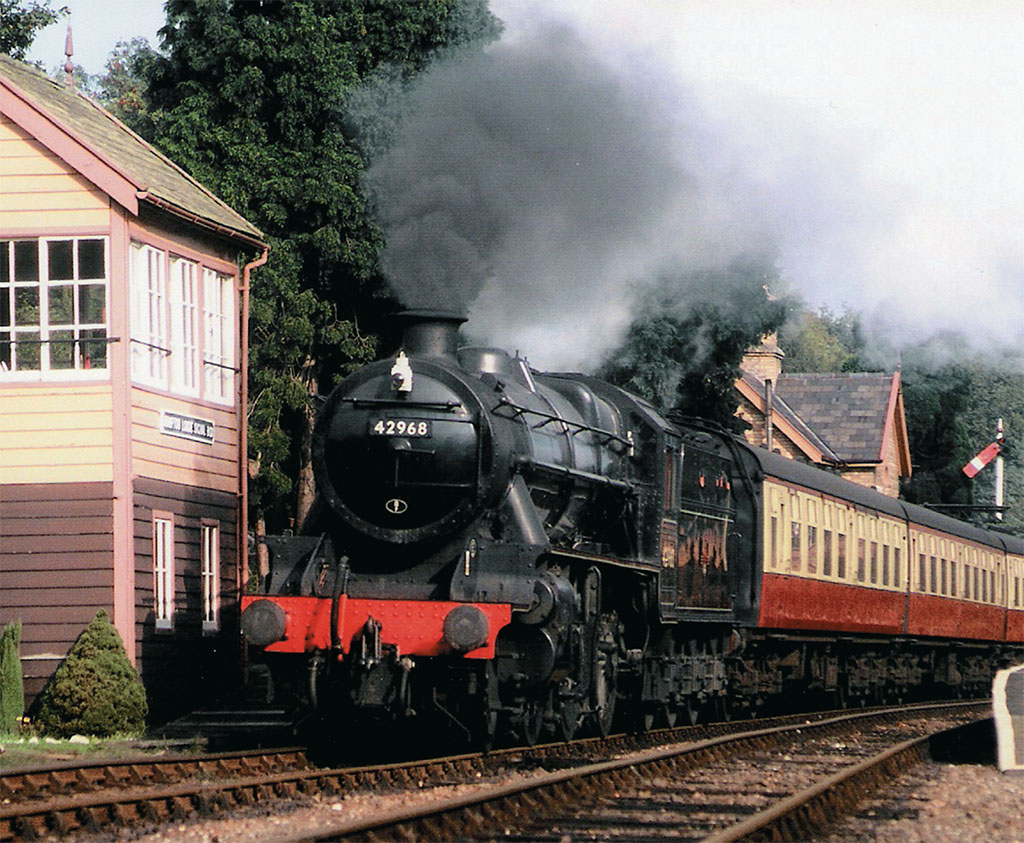
SEVERN VALLEY RAILWAY
It largely re-creates the 1950s BR era. Real ale is served in the buffet car.
Location: Six stations in West Yorkshire
Web site: www.kwvr.co.uk
Operation: Weekends throughout the year plus some other special events. Daily during July and August
Fares: Day rover, £14 adult, £7 child, and £33 family
Ffestiniog Railway
Originally built as a horse drawn and gravity operated narrow gauge line for the slate industry, it claims to be oldest independent railway company in the world. The severe gradients and resulting spectacular scenery make this line the must visit of the 10 “Great Little Trains of Wales.”
The line wasn’t included in the 1923 grouping, and it had already closed in 1946 before nationalization. Reopening as a tourist line in 1954, it now operates the 13.5 miles from Portmadog to Blaenau Ffestiniog.
Climbing through Snowdonia National Park, it is unique for its spiral out of Dduallt station, which is necessitated by a deviation due to the Tan-y-grisiau reservoir. It is also famed for its Double Fairlie locomotives, which look like two engines sandwiched together at the cab.
From 2011 the line will connect with the Welsh Highland Railway at Portmadog Harbour Station, allowing for a journey to Caernarfon.
Location: Five main stations in Gwynedd
Web site: www.ffestiniograilway.co.uk
Operation: Daily from April to October and then most Wednesdays and Thursdays and some other days.
Fares: Day ticket £18.50 adult. Each child accompanied by an adult is free.
Romney, Hythe & Dymchurch Railway
Not only is this railway unique in being a proper working line despite its size, it is also the only line in this list not to have ever closed. The brainchild of racing millionaires, it opened in 1927. Today it runs for 13.5 miles between Hythe and Dungeness and still fulfills a public transport function with a contract to take children to the Marsh Academy. It also provides access to the Romney Marsh Visitor Centre.
It is operated by engines that look as if they are scaled down mainline locomotives; in fact, they were largely designed especially for the line.
Location: Six main stations in Kent
Web site: www.rhdr.org.uk
Operation: Daily from April to October. Then, usually weekends and holiday periods.
Fares: Rover ticket, £14 adult, £7 children, and £38 family





Comments